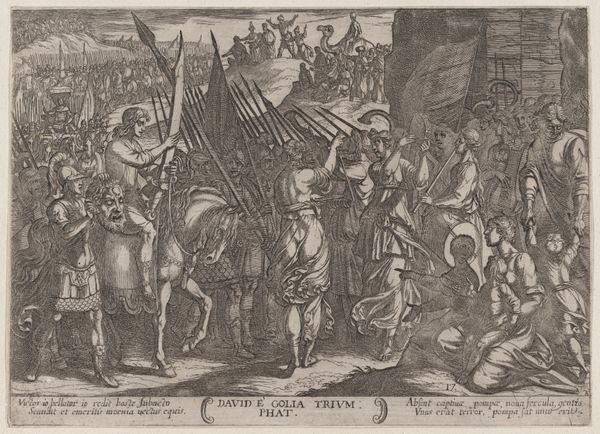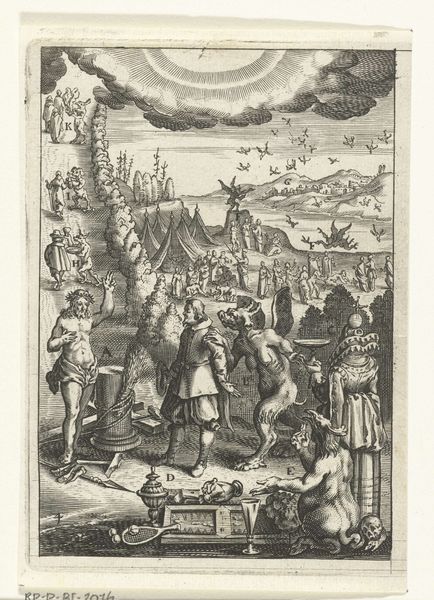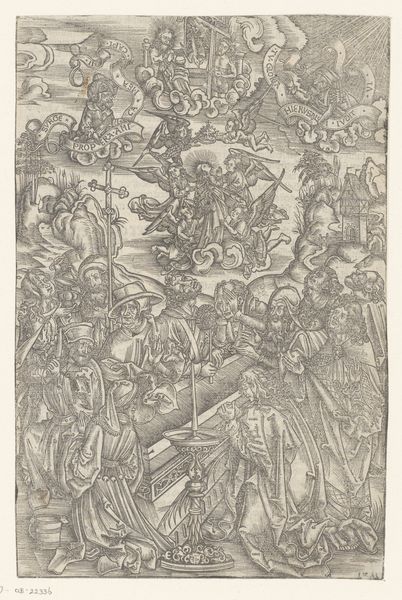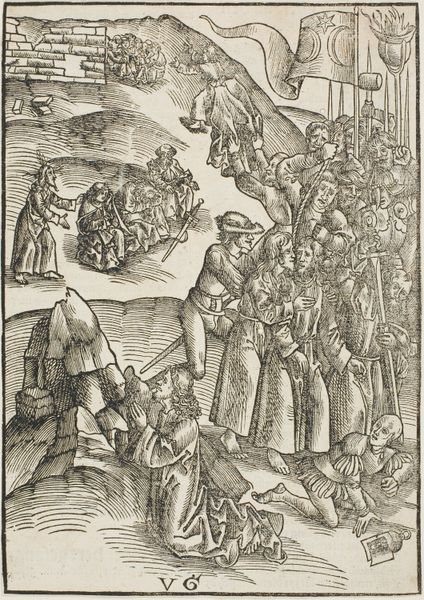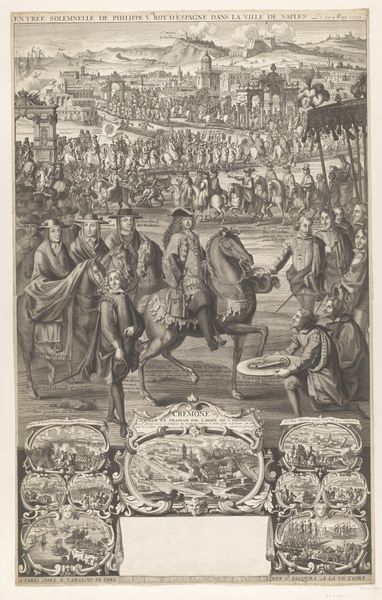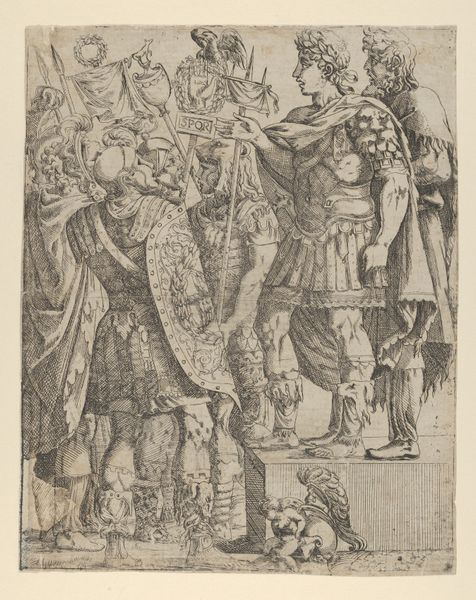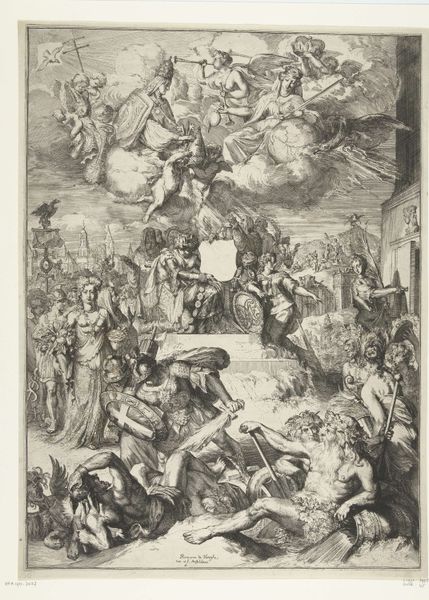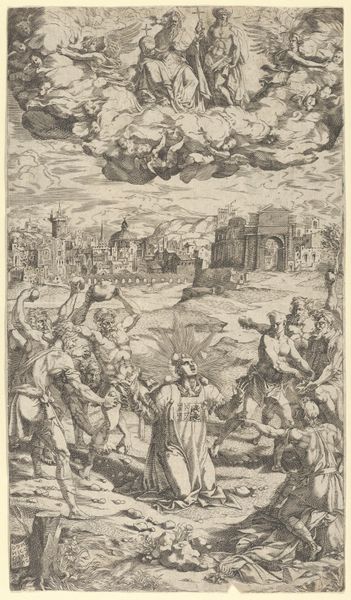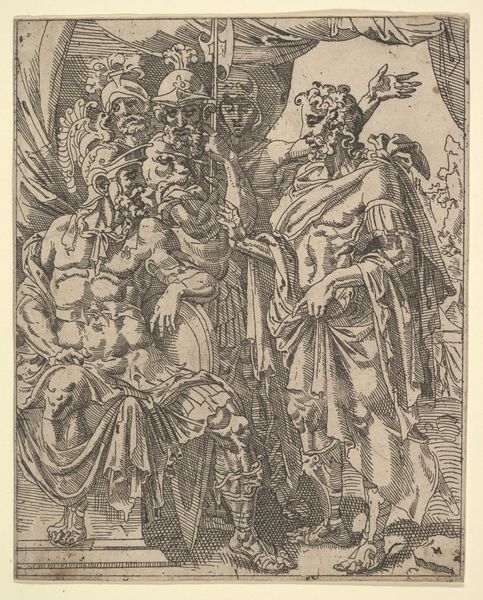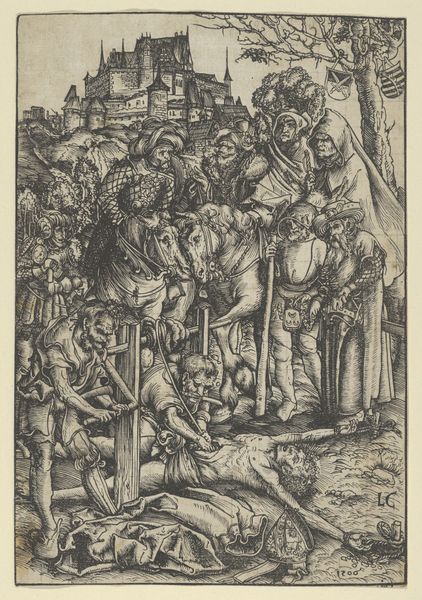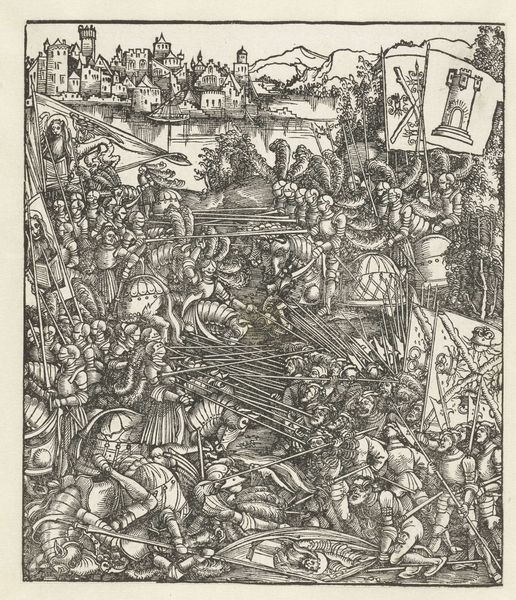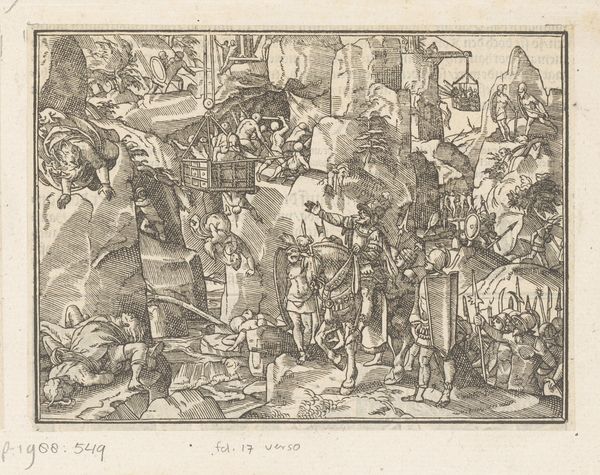
drawing, print, ink, engraving
#
drawing
# print
#
figuration
#
ink
#
history-painting
#
italian-renaissance
#
engraving
Dimensions: sheet: 10 1/2 x 7 1/16 in. (26.7 x 18 cm) borderline
Copyright: Public Domain
Curator: What a striking image! I'm drawn to the texture, the intricate web of lines. There’s something so immediate and urgent about the moment depicted. Editor: That immediacy is really interesting. We are looking at "The Martyrdom of St. Barbara," an engraving done sometime between 1575 and 1582 by Giorgio Ghisi, currently housed at the Metropolitan Museum. What narratives do you feel are emerging in this image? Curator: Well, initially, the sheer drama of it grabs me. The figure with the sword raised high, poised to strike... It's a terribly intimate act of violence captured in print. Is this martyrdom a performance of religious and gendered identity? Editor: It absolutely functions as a performance. St. Barbara, often associated with architecture and protection from lightning, is a complex figure. Her steadfast belief in the face of extreme patriarchal violence positions her within broader narratives of female resistance, particularly when considering the ways in which early Christian women were persecuted for challenging the social order. And in its engraving format it could be widely disseminated for educational purposes, and so this martyrdom becomes deeply politically and socially implicated in questions of both Christian virtue and political rebellion. Curator: It's curious how the engraver seems to luxuriate in the horror of the scene while still pointing to something like grace. I love the little angels in the top of the piece. Such optimism alongside all of this state-sponsored horror! The textures in the angel's wings are immaculate. Editor: Yes, the duality! Ghisi presents St. Barbara almost as a transgressor, or a radical woman resisting these strict impositions. That positionality – poised between defiance and piety, suffering and sanctity – becomes a focal point. The tension isn't just in the action itself, but in what Barbara *represents*. Her martyrdom isn't simply about religious conviction, but it's about challenging social hierarchies and embracing radical ideas and perhaps those ideas can have real structural political affects. Curator: Seeing it through that lens, the crowd surrounding her takes on a new dimension as well. These people surrounding Barbara are less voyeurs and more participants in something much larger. What strikes me most is how timely such old artworks remain! Editor: It’s in that continual conversation across time and space where, hopefully, we can find new avenues for understanding and, maybe, a bit of shared purpose, as well.
Comments
No comments
Be the first to comment and join the conversation on the ultimate creative platform.

